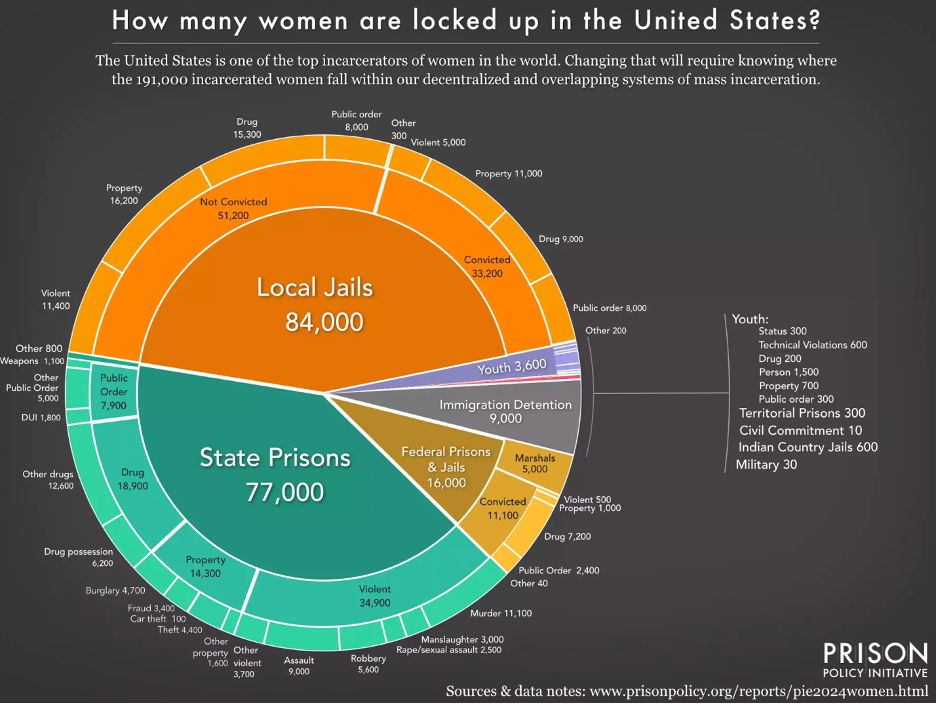Data Analysis June 10, 2024
Since 2015, we’ve worked with the Safety and Justice Challenge in communities across the country to develop, implement, and study tailored strategies to safely reduce jail populations. Now, we’re embarking on a new effort to synthesize that research into the next generation of reform priorities—and better understand how to effectively reduce racial and ethnic disparities.
The Safety and Justice Challenge (SJC), funded by the John D. and Catherine T. MacArthur Foundation, has been commissioning research in communities to answer the question of “what works?” in criminal legal reform across the nation for nearly a decade. From its inception, the SJC has relied heavily on data to develop reform strategies and assess progress toward initiative goals across participating sites. Data are also used to develop research and lessons learned for the larger criminal legal field, as a way to advance fair and effective reform work on a broader scale. The SJC Research Consortium (Consortium), managed by CUNY ISLG, was established in 2019 to develop and carry out research.
Synthesizing Research into New Priorities for Criminal Legal Reform
To honor the upcoming decennial milestone, in 2023 we began leading an entirely new work stream in partnership with the MacArthur Foundation and its affiliates to review and summarize lessons learned from across SJC-funded research projects and initiatives. The goal of this SJC synthesis work is to tap into our unique bird’s eye view to identify issues within the SJC research priorities that inform our work and the field at large.
As part of this new work, we are cataloguing and reviewing all SJC-funded research to better understand this collective knowledge, including important lessons on how to change systems, what impacts reform strategies have on individuals and communities, and how to eliminate racial and ethnic disparities. As the SJC continues to fund work through its various mechanisms, we will add new findings to our synthesized learnings to keep current on what know about achieving a more just and equitable criminal legal system, so that we can use this knowledge to drive our collective work.
The recently published Research Year in-Review offers a preview of the first chapter of our journey. It presents some common themes and preliminary findings related to the Eliminating Racial and Ethnic Disparities research priority area that has guided SJC work. As this work is in its earlier stages, the learnings shared there and summarized here are not inclusive of all research funded by the SJC to date, and findings will continue to be expanded throughout 2024.
Even during preliminary synthesis stages however, several themes emerged:
-
Racial and ethnic disparities won’t naturally fall with general reduction in jail populations. Specially targeted efforts are required to achieve this.
-
Restrictions on who can participate in programming like diversion and deflection—also known as eligibility criteria— pose significant barriers to services, program buy-in and uptake, and create multiple forms of bias leading to disparate outcomes.
-
At the aggregate level, progress on reducing racial and ethnic disparities has not been made as quickly as progress in reducing jail populations, but research has uncovered a myriad of ways that harms have been reduced for BIPOC individuals enmeshed with the criminal legal system.
-
Programs with multiple participation/completion requirements can be counterproductive to the goals they are trying to achieve.
-
Deflection rates are not always equitable, but do keep individuals out of the criminal legal system—especially those with mental health and substance abuse disorders.
-
Diversion programs are showing preliminary, but positive results for the Black juvenile population, and have the potential to reduce disparities for new convictions and new jail admissions.
-
Population Review Teams do have the potential to reduce racial and ethnic disparities, but the small number of cases reviewed each year lead to minimal impacts. However, strict eligibility criteria can actually create disparities in terms of who’s cases are selected for review.
-
Bail reform can reduce disparities by ensuring that more defendants are being Released on Recognizance (ROR) for certain types of cases during the pretrial phase. Additionally, eliminating cash bail reduces the burden of paying bail which typically falls to BIPOC individuals that cannot afford it.
-
Black individuals tend to be incarcerated more than any other group for probation violations. Programs that are meant to expedite release for those detailed for violations can have significant impacts on Black individuals.
-
Findings on pleas are mixed, but indicate that Black individuals tend to face worse plea outcomes, especially for drug and weapon offenses.
-
The role and presence of a defense provider at bond hearings can lead to more equitable outcomes.
For more information about 2023 SJC research published, new projects launched, SJC media mentions, and more detailed information on synthesis work, visit the full 2023 Research Year-in-Review.
CUNY ISLG has launched a new process for soliciting ideas and approaches from SJC Consortium members – an opportunity to submit letters of intent (LOIS) to pitch research projects to the CUNY ISLG Consortium team! CUNY ISLG will now accept LOIs for research proposals from current Consortium members on a rolling basis throughout the calendar year. These LOIs are intended to be short 2-3 page submissions describing research ideas that touch on one more of the SJC priority areas and advance SJC research goals and objectives, particularly around knowledge development. The requirements and guidelines for submitting LOIs as well as information on the review process can be found here.












